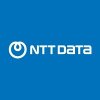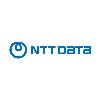
i
Kyndryl
Proud winner of ABECA 2024 - AmbitionBox Employee Choice Awards
Filter interviews by
Kyndryl Network Security Engineer Interview Questions and Answers
Kyndryl Network Security Engineer Interview Experiences
1 interview found
I applied via Naukri.com and was interviewed in Nov 2024. There were 3 interview rounds.
(1 Question)
- Q1. Roles & responsibilities in WAF
- Ans.
A Web Application Firewall (WAF) is a security solution that monitors and filters HTTP traffic between a web application and the Internet.
Monitoring and filtering HTTP traffic to protect against common web application attacks such as SQL injection, cross-site scripting (XSS), and cross-site request forgery (CSRF)
Configuring and maintaining rules to block malicious traffic while allowing legitimate traffic to pass throu...
(1 Question)
- Q1. Compatibility with the job role and current experience
- Ans.
I have extensive experience in network security and have successfully implemented various security measures in my previous roles.
I have a strong background in network security protocols and technologies
I have experience in implementing firewalls, intrusion detection systems, and VPNs
I have successfully managed security incidents and conducted security audits
I have a track record of staying up-to-date with the latest se
(1 Question)
- Q1. Will be able to do rotational shifts
Interview Preparation Tips
- WAF
- Firewalls
- Load Balancers
- Security Policies
- DNS
- Virtual Wire
Network Security Engineer Jobs at Kyndryl
Interview questions from similar companies

I applied via Approached by Company and was interviewed before Mar 2021. There were 2 interview rounds.

(3 Questions)
- Q1. Explain LSA Types in detail
- Ans.
LSA Types are used in OSPF to describe the type of information contained in the LSA.
Type 1: Router LSA - contains information about the router and its directly connected networks
Type 2: Network LSA - describes the networks connected to a multi-access network
Type 3: Summary LSA - contains information about networks outside of the area
Type 4: ASBR Summary LSA - describes the ASBR router to the rest of the OSPF domain
Type...
- Q2. Static/ Default Routes
- Q3. BGP Attributes in detail
- Ans.
BGP attributes are used to determine the best path for routing traffic between autonomous systems.
BGP attributes include: AS Path, Next Hop, Local Preference, Weight, Multi-Exit Discriminator (MED), Origin, and Community
AS Path is a list of autonomous systems that the route has passed through
Next Hop is the IP address of the next router in the path
Local Preference is used to indicate the preferred path for outbound tra...
Interview Preparation Tips
- Bgp
- OSPF
- MPLS
- Static Routing
Skills evaluated in this interview

Normal aptitude group discussion assignment case study
Coding test assignment one on one round
(2 Questions)
- Q1. Technical vs no tech
- Ans.
Technical skills are essential for a Network Engineer, but soft skills are also important for effective communication and teamwork.
Technical skills are necessary for configuring and troubleshooting network devices.
Soft skills like communication, teamwork, and problem-solving are crucial for working effectively with colleagues and clients.
Balancing technical expertise with interpersonal skills is key to success in the r...
- Q2. Dhcp vs dns gdp vs rdp frp vs 30nd
- Ans.
DHCP is a protocol used to assign IP addresses dynamically to devices on a network, while DNS is a system that translates domain names to IP addresses.
DHCP assigns IP addresses to devices on a network dynamically
DNS translates domain names to IP addresses
RDP (Remote Desktop Protocol) allows users to remotely connect to a computer
FRP (Fiberglass Reinforced Plastic) is a material used in construction
30nd does not seem to
Interview Preparation Tips
Skills evaluated in this interview

I applied via Naukri.com and was interviewed in Jan 2023. There were 3 interview rounds.

(1 Question)
- Q1. What is STP What is ping What is networking What is osi model What is ip address What are the classes of ip address What is mac adress What is ARP What is RRRP
- Ans.
STP is a network protocol that prevents loops in Ethernet networks. Ping is a network utility used to test connectivity. OSI model is a framework for understanding how networks operate. IP address is a unique identifier for devices on a network. MAC address is a hardware address for network devices. ARP is a protocol used to map IP addresses to MAC addresses. RRRP is not a standard networking term.
STP stands for Spanni...
(1 Question)
- Q1. Nothing much Its all about our agree
Interview Preparation Tips
Skills evaluated in this interview

I applied via Company Website and was interviewed in Jul 2024. There were 3 interview rounds.
(2 Questions)
- Q1. UST is good interviewer is not good
- Q2. Even we don't know the question atleast Interviewer required minimum patience .Iritating
(2 Questions)
- Q1. Basic question only OSPF
- Q2. Load balancer configuration
(2 Questions)
- Q1. OSPF, Load balancer
- Q2. Load balancing configuration
Interview Preparation Tips


(1 Question)
- Q1. General discussion
(2 Questions)
- Q1. Questions related to networking
- Q2. Routers switch configuration and commands
- Ans.
Routers switch configuration and commands involve setting up and managing network devices for efficient data routing.
Routers use commands like 'show ip route' to display routing table information
Configuration involves setting up IP addresses, subnet masks, and default gateways
Commands like 'show interfaces' can display interface status and configuration details
Skills evaluated in this interview

(2 Questions)
- Q1. What is bgp and working
- Ans.
BGP (Border Gateway Protocol) is a routing protocol used to exchange routing information between different networks on the internet.
BGP is used by internet service providers to make routing decisions.
It operates on TCP port 179.
BGP uses path attributes to determine the best route to a destination.
BGP can be configured in different ways such as eBGP (external BGP) and iBGP (internal BGP).
- Q2. What was you network experience
Skills evaluated in this interview

I applied via Walk-in and was interviewed before Oct 2023. There were 3 interview rounds.
(3 Questions)
- Q1. What OSPF and its state and LSAs
- Ans.
OSPF (Open Shortest Path First) is a routing protocol used to determine the best path for data packets in a network.
OSPF is a link-state routing protocol that uses Dijkstra's algorithm to calculate the shortest path to each network.
OSPF routers exchange Link State Advertisements (LSAs) to build a topology database.
There are several types of LSAs, including Router LSAs, Network LSAs, Summary LSAs, and AS External LSAs.
O...
- Q2. VLAN and DTP, STP. RSTP, HSRP/VRRP protocols
- Q3. Etherchannel, EIGRP
(2 Questions)
- Q1. BGP and its states and attributes
- Ans.
BGP (Border Gateway Protocol) is a routing protocol used to exchange routing information between different autonomous systems.
BGP has four main states: Idle, Connect, OpenSent, and Established.
BGP attributes include AS_PATH, NEXT_HOP, LOCAL_PREF, and ORIGIN.
AS_PATH attribute shows the path the route has taken through different autonomous systems.
NEXT_HOP attribute specifies the next hop IP address to reach a particular...
- Q2. Monitoring tool
(1 Question)
- Q1. Salary negotiation
Skills evaluated in this interview

I applied via Referral and was interviewed before May 2021. There were 3 interview rounds.

(8 Questions)
- Q1. Tell about the SDWAN concept.
- Ans.
SDWAN is a software-defined approach to managing and optimizing WAN connections.
SDWAN uses software to control and manage network traffic across multiple WAN connections.
It can dynamically route traffic based on network conditions and application requirements.
SDWAN can improve network performance, reduce costs, and simplify network management.
Examples of SDWAN vendors include Cisco, VMware, and Silver Peak.
- Q2. Difference between OSPF & EIGRP
- Ans.
OSPF is a link-state protocol while EIGRP is a hybrid protocol.
OSPF uses Dijkstra's algorithm to calculate the shortest path while EIGRP uses a metric based on bandwidth, delay, reliability, load, and MTU.
OSPF supports VLSM and route summarization while EIGRP supports only route summarization.
OSPF is an open standard protocol while EIGRP is a Cisco proprietary protocol.
OSPF has a higher convergence time than EIGRP.
OSPF...
- Q3. What is the cost of the default route?
- Ans.
The cost of default route varies depending on the network infrastructure and service provider.
The cost of default route is usually included in the overall cost of the internet service provided by the ISP.
The cost may also depend on the type of connection, such as fiber optic or cable.
In some cases, the cost may be higher for businesses that require more bandwidth and faster speeds.
The cost may also vary depending on th...
- Q4. How OSPF neighbourship occuures?
- Ans.
OSPF neighbourship occurs when two OSPF routers establish a relationship to exchange routing information.
OSPF routers send hello packets to discover neighbours
If the hello packets are compatible, the routers become neighbours
The routers exchange database descriptors to synchronize their link-state databases
If the databases are the same, the routers become fully adjacent
Neighbourship can be affected by network topology
- Q5. What is AS path prepend?
- Ans.
AS path prepend is a technique used in BGP to influence the path selection of traffic.
AS path prepend involves adding the same AS number multiple times to the AS path attribute of a BGP route advertisement.
This makes the path appear longer and less desirable, causing traffic to prefer other paths.
AS path prepend can be used to influence inbound or outbound traffic.
Inbound traffic can be influenced by adding the local A...
- Q6. What is the difference between overlay and underlay?
- Ans.
Overlay is a network virtualization technique that adds a layer of abstraction over the physical network, while underlay refers to the physical network infrastructure.
Overlay is used to create virtual networks on top of the physical network infrastructure.
Underlay refers to the physical network infrastructure that provides connectivity between devices.
Overlay networks are used to provide network virtualization, multi-t...
- Q7. What is VRF and how it works?
- Ans.
VRF stands for Virtual Routing and Forwarding. It is a technology that allows multiple instances of a routing table to coexist on the same router.
VRF provides logical separation of routing tables, allowing multiple routing domains to exist on a single physical router.
Each VRF has its own routing table and forwarding table, which allows for overlapping IP addresses to be used without conflict.
VRFs are commonly used in M...
- Q8. What is BGP damping?
- Ans.
BGP damping is a technique used to reduce the impact of unstable routes on the internet.
BGP damping helps to prevent the propagation of unstable routes by temporarily suppressing them.
It is used to reduce the impact of route flapping, which occurs when a route repeatedly alternates between available and unavailable states.
BGP damping assigns a penalty value to unstable routes, and if the penalty exceeds a certain thres...
(3 Questions)
- Q1. Discussed about previous experience
- Q2. Discussed about educational background
- Q3. Discussed about salary negotiation.
Interview Preparation Tips
Skills evaluated in this interview

(2 Questions)
- Q1. What is osi model
- Ans.
The OSI model is a conceptual framework that standardizes the functions of a telecommunication or computing system into seven layers.
The OSI model stands for Open Systems Interconnection model.
It helps in understanding how different networking protocols work together.
Each layer in the OSI model has specific functions and communicates with adjacent layers.
Examples of OSI model layers include physical layer, data link la
- Q2. It is reference model
Skills evaluated in this interview
Kyndryl Interview FAQs
Tell us how to improve this page.
Kyndryl Interviews By Designations
- Kyndryl Associate Technical Engineer Interview Questions
- Kyndryl System Administrator Interview Questions
- Kyndryl Project Manager Interview Questions
- Kyndryl Senior Project Manager Interview Questions
- Kyndryl Network Engineer Interview Questions
- Kyndryl Technical Engineer Interview Questions
- Kyndryl Infrastructure Specialist Interview Questions
- Kyndryl Technical Specialist Interview Questions
- Show more
Interview Questions for Popular Designations
- Network Engineer Interview Questions
- Network Administrator Interview Questions
- Senior Network Engineer Interview Questions
- Network Support Engineer Interview Questions
- L2 Network Engineer Interview Questions
- Network Engineer L1 Interview Questions
- Senior Network Security Engineer Interview Questions
- Network Specialist Interview Questions
- Show more
Kyndryl Network Security Engineer Interview Process
based on 2 interviews
Interview experience
Network Security Engineer Interview Questions from Similar Companies
Fast track your campus placements
|
System Administrator
1.3k
salaries
| ₹2.9 L/yr - ₹12 L/yr |
|
Project Manager
620
salaries
| ₹7.1 L/yr - ₹28.5 L/yr |
|
Associate Technical Engineer
590
salaries
| ₹3.5 L/yr - ₹6.5 L/yr |
|
Infrastructure Specialist
579
salaries
| ₹4.7 L/yr - ₹23 L/yr |
|
SME
419
salaries
| ₹7.5 L/yr - ₹25.5 L/yr |

Genpact

DXC Technology

Sutherland Global Services

Optum Global Solutions
- Home >
- Interviews >
- Kyndryl Interview Questions >
- Kyndryl Network Security Engineer Interview Questions













